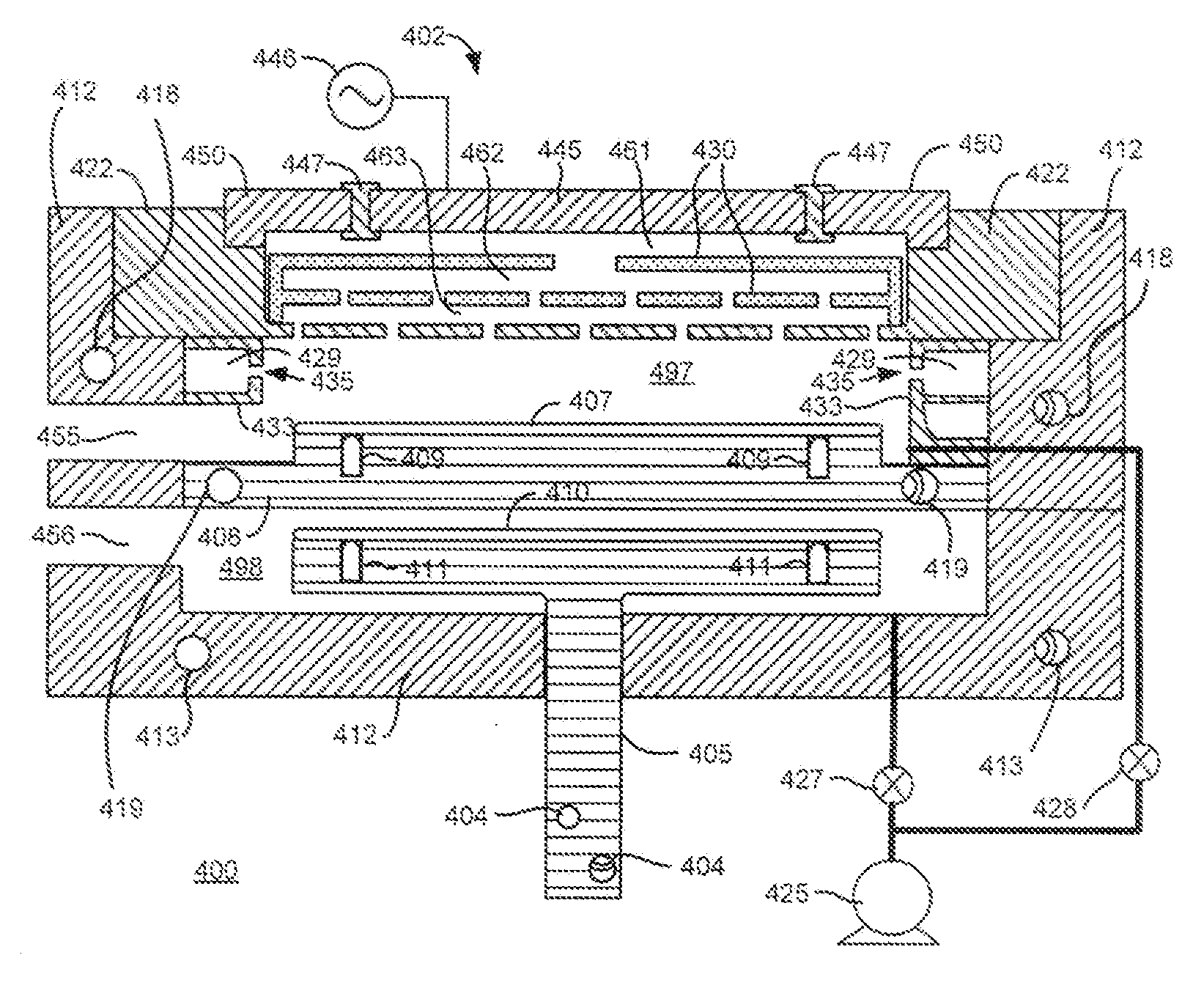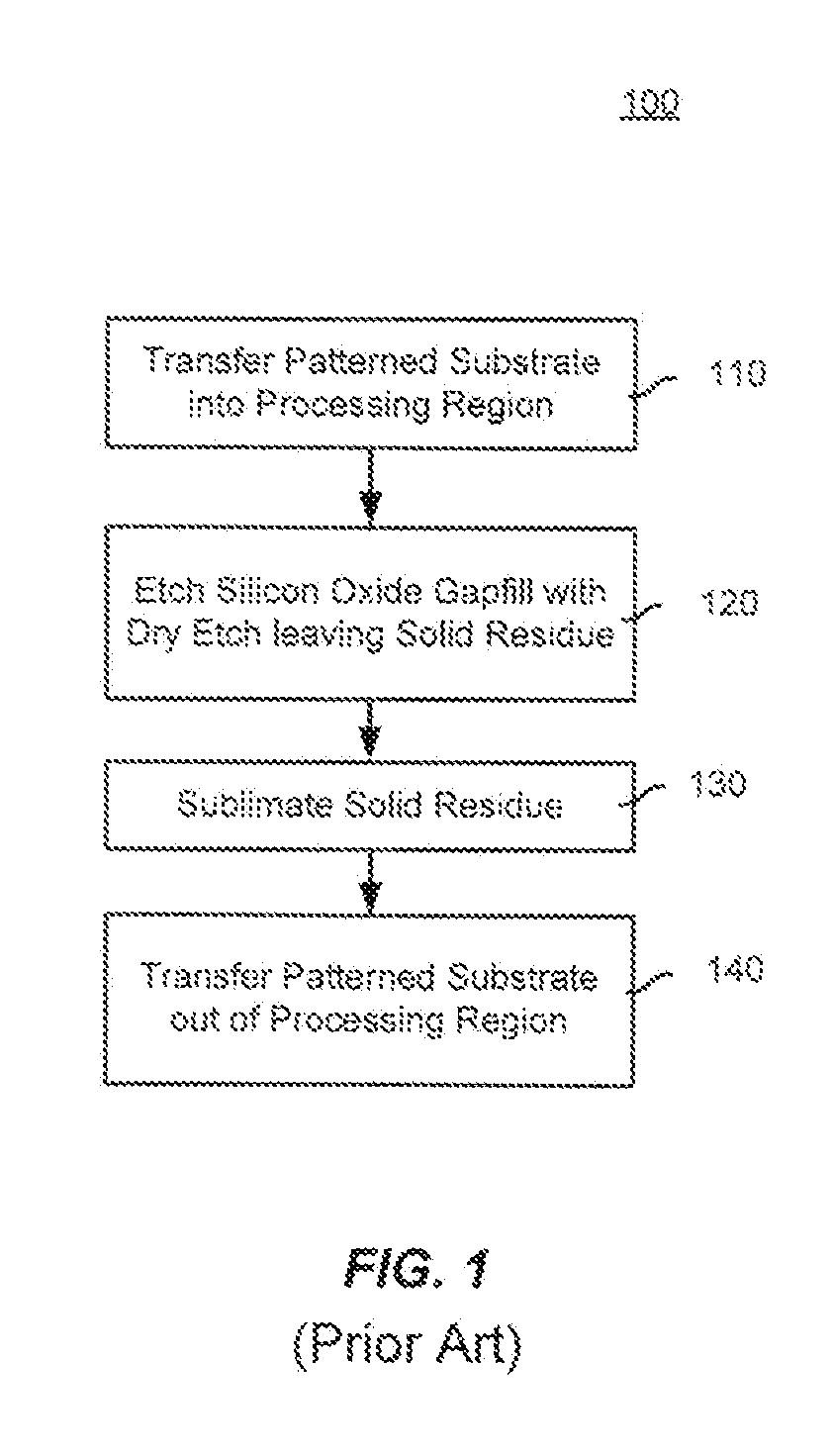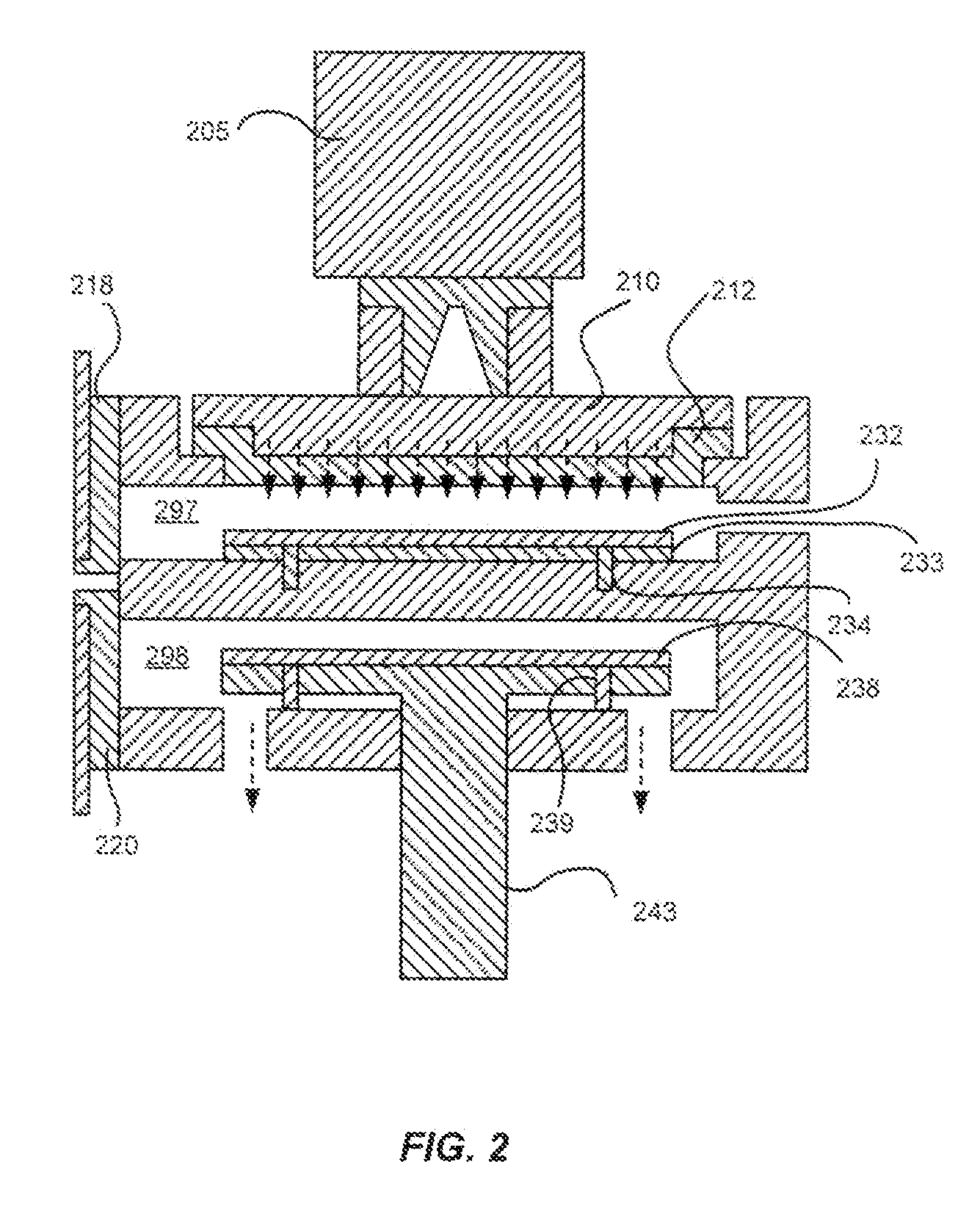Semiconductor chamber apparatus for dielectric processing
a dielectric processing and chamber technology, applied in electrical apparatus, basic electric elements, electric discharge tubes, etc., can solve the problems of inability to readily remove silicon, consumption of silicon oxide material, associated production of solid residues, etc., and achieve the effect of improving the throughput of a processing system and increasing the number of processing chambers
- Summary
- Abstract
- Description
- Claims
- Application Information
AI Technical Summary
Benefits of technology
Problems solved by technology
Method used
Image
Examples
Embodiment Construction
[0017]Systems and chambers for processing dielectric films on substrates are described. Vertical combo chambers include two separate processing chambers vertically arranged in a processing stack. A top processing chamber is configured to process the substrate at relatively low substrate temperature. A robot is configured to remove a substrate from the top processing chamber and change height before placing the substrate in a bottom processing chamber. The bottom processing chamber is configured to anneal the substrate to further process the dielectric film. The vertical stacking increases the number of processing chambers which can be included on a single processing system. The separation of the bottom (annealing or curing) chamber and the top chamber allows the top chamber to remain at a low temperature which hastens the start of a process conducted on a new wafer transferred into the top chamber. This configuration of vertical-combo chamber can be used for depositing a dielectric ...
PUM
| Property | Measurement | Unit |
|---|---|---|
| temperature | aaaaa | aaaaa |
| temperature | aaaaa | aaaaa |
| temperature | aaaaa | aaaaa |
Abstract
Description
Claims
Application Information
 Login to View More
Login to View More - R&D
- Intellectual Property
- Life Sciences
- Materials
- Tech Scout
- Unparalleled Data Quality
- Higher Quality Content
- 60% Fewer Hallucinations
Browse by: Latest US Patents, China's latest patents, Technical Efficacy Thesaurus, Application Domain, Technology Topic, Popular Technical Reports.
© 2025 PatSnap. All rights reserved.Legal|Privacy policy|Modern Slavery Act Transparency Statement|Sitemap|About US| Contact US: help@patsnap.com



